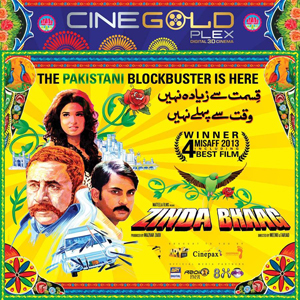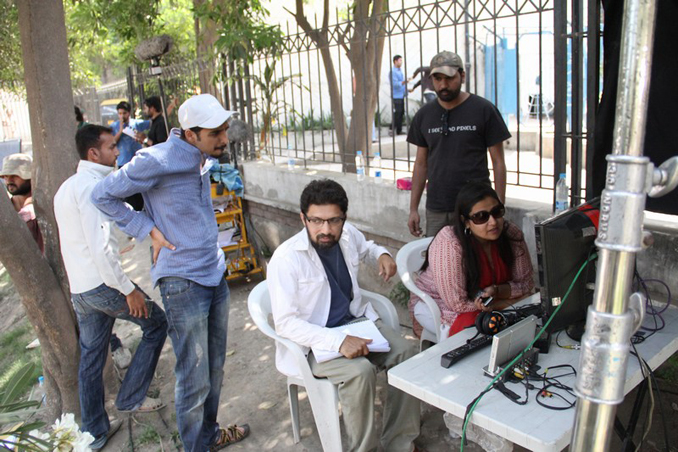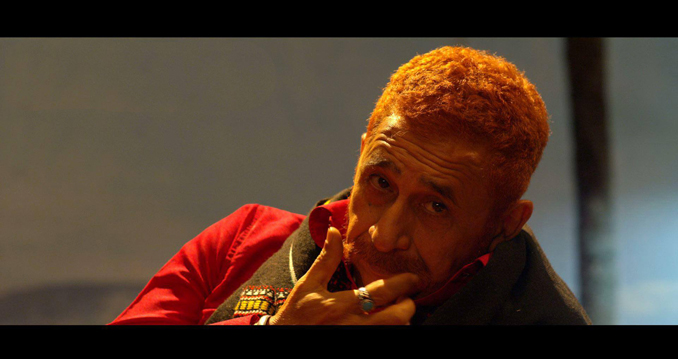Written by: Syed Abbas Hussain
Posted on: December 09, 2013 |  | 中文
| 中文
Zinda Bhaag made headlines in the recent past for being a contender for Pakistan’s entry into the Oscar Nominations this year. It was after 50 years that a Pakistani film was shortlisted to be in the running for an Academy Award nomination.
Directed by Farjaad Nabi and starring veteran Indian actor Naseeruddin Shah alongside a new pool of Pakistani talent, the film was hugely anticipated. Zinda Bhaag is not the quintessential feature film by any standard. It is as gritty as it gets, portraying the aspirations and traumas of the underclass and the huge chasm which exists in Pakistani society between the upper class and lower class. The plight of the poor man whose life is fraught by social pressures is captured in the film which delves into the inner conflicts of people living through tumultuous circumstances on a day to day basis, circumstances which constantly weigh on them.
 |
The film’s treatment is very minimalistic and the frames are constricted to give a sense of the crammed spaces that the protagonists live in. It may be a low-budget affair but its hard-hitting storyline (by Meenu Gaur and Farjaad Nabi) and its realism take the viewer into a world of poverty, bawdiness and tragedy. The movie, as affirmed by many viewers who hail from Lahore, depicts Lahore in its true essence in terms of the humour and the images of the interior city, with its ramshackle homes and hole-in-the-wall eateries that serve local delicacies. This indie film lives up to its indigenous feel and, strikingly, makes a return to the lost art form of the hand painted film poster after years, as seen in its promotional campaigns.
The story centers around three friends played by Khurram Patras, Salman Ahmad Khan and Zohib, who live in a small locality in the decrepit walled city of Lahore. They all yearn to become rich one day and lead the lifestyle which they can only dream of. They traverse dubious avenues such as fraud and gambling to bolster their monetary standing which lands them in harrowing situations. The central characters of the film yearn to settle abroad and carve their destinies there. This forms one of the central themes of the film which is a true reflection of the ambitions of many individuals from the grassroots, who perceive foreign countries to be a haven of luxury and glamour.
 |
| On the set of Zinda Bhaag |
The personal journey the characters are undergoing is narrated by the director quite sensitively and simple moments manage to convey volumes of emotion that strike you.
Every character in the film, even with the minutest screen presence, has a lot of depth - even those who have next to no dialogues in the film communicate silently through their countenance and appearance; whether it is the protagonist’s disheveled sister who mechanically sews clothes while being transfixed by a formulaic soap opera or an angst ridden father whose deep wrinkles and furrowed eyebrows tell a haunting story.
Amina Ilyas, a model turned actor, beautifully enacts the role of a soap-maker who runs a humble business with utmost dedication. Her natural acting and girl next-door look gives her an earthy charm, one that viewers can easily connect to. Naseeruddin Shah as the pehalwaan makes an entry from time to time and narrates his tales of wisdom in flashbacks.
 |
A film about Lahore would of course carry music as an important component and the sound track of Zinda Bhaag includes some beautiful songs composed by the popular and very skilled Bagga. The songs are incorporated in a way that they seamlessly flow through the narrative without appearing incongruous. The emotions of the characters resound in the music and the last song in the film, Thaatan Maarda by the iconic Rahat Fateh Ali Khan, especially does so quite rousingly.
This film is definitely for the serious cinemagoer and depicts the grotesque life of the underbelly through dark and narrow alleyways, but with a dollop of Punjabi humour.
You may also like: